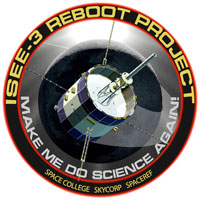
The U.S. Department of Transportation on Monday announced it would move forward with a plan that would make car-to-car communication mandatory among light vehicles, a measure that could lead to safer roads.
Vehicle-to-vehicle, or V2V, communication allows cars to share data including speeds and brake applications with nearby cars. That data can then help warn drivers about possible collisions. For instance, if one car turns a corner and unexpectedly slams on the brakes, that car could communicate the action to nearby vehicles, which could then warn their drivers.
The technology would be used only to share information affecting safety, the DoT emphasized. It would not be used to collect personal data or for location tracking.
The technology could be especially useful in preventing common crashes such as rear-end or lane-change collisions, the DoT said.
Road Tests
V2V connectivity has been tested extensively; a program in Ann Arbor, Mich., deployed close to 3,000 vehicles in the largest road test of the technology.
The National Highway Traffic Safety Administration plans to release a report on its analysis of some of that testing and a year-long pilot program for V2V communication technology, which will provide more details about its technical feasibility, costs and safety benefits.
The NHTSA will then begin the process of drafting a proposal for a regulation that would make it mandatory in new vehicles in a “future year.”
Enabling the Connected Car
Engineers have been developing connected car applications for years: V2V communications; vehicle-to-infrastructure (V2I) connectivity; and autonomous driving technology. They’re making huge strides in all of those areas, but V2V communications currently appears to be the most realistic application for the mainstream consumer, said Joyoung Lee, connected car researcher and assistant professor in the Department of Civil and Environmental Engineering at New Jersey Institute of Technology.
“Google’s driverless car … relies on a very expensive radar-based detection system to capture the driving information of adjacent vehicles,” he told TechNewsWorld. “V2V communication-based detection is expected to produce the same performance at a much cheaper cost.”
The DoT’s endorsement of car-to-car communication shows that the time is right to start putting it into the average driver’s car, said Panagiotis Tsiotras, professor and director of the Dynamics and Control Systems Laboratory at the Georgia Institute of Technology.
“This technology has been under development for many years now,” he told TechNewsWorld. “The V2V connectivity can have a great positive impact on automotive transportation by reducing the risk of accidents by properly sending warning signals for an impending collision.”
In addition, the connected car also could lead to greater fuel efficiency, said Bill Holloway, transportation policy analyst at the State Smart Transportation Initiative.
“As this type of technology becomes more widespread, it could also generate major efficiency gains,” he told TechNewsWorld.
“Cars have gotten much more efficient in recent decades, but a lot of the efficiency gains have gone towards increasing horsepower and adding safety features, while vehicle weight hasn’t changed too much,” Holloway said.
“However, if smarter vehicles can help avoid crashes altogether, they would make lighter vehicles a much more attractive option for consumers,” he pointed out, “which would yield major fuel efficiency gains.”
Waiting for Green Light
Like any advancement in technology, the implementation of V2V communications likely will be gradual, said Tsiotras.
“The main issues will be reliability of the technology and, most importantly, also the issue of mixing vehicles — having this technology with vehicles that lack the ability to communicate with other vehicles,” he explained.
“It will take some time before all the vehicles will have this capability,” Tsiotras observed. “Till then, I think that the focus will be mainly on the use of the V2V technology for traffic regulation purposes. Collision avoidance will follow afterwards.”






















































Great article! I touch on the subject in my article "Why You Should Be Excited About Future Tech"
The Link is below.
http://www.informationweek.com/strategic-cio/executive-insights-and-innovation/why-you-should-be-excited-about-future-tech/d/d-id/1114036?